
In the vibrant world of gardening, choosing the right container for your plants can significantly influence their growth and health. As the debate between Grow Bags and Plastic Pots continues, it's crucial to understand the benefits, drawbacks, and specific needs they cater to. Dive in as we explore the world of grow bags and plastic pots, helping you make the perfect choice for your green companions.
In the bustling world of gardening and horticulture, Grow Bags have emerged as a modern, effective alternative to traditional containers. But what exactly are these intriguing items? Let's dive right in!
At their core, Grow Bags are breathable fabric containers designed for nurturing and growing plants. Unlike their rigid counterparts, such as plastic pots, Grow Bags provide an environment that mimics a more natural soil setting. They're versatile, portable, and suitable for a variety of plants, from vegetables to ornamental species. Think of them as the trendy, sustainable jeans of the plant world, if you will.
What sets them apart, you ask? One major advantage is their fabric material. This promotes healthy root growth by allowing excess water to drain out, preventing over-watering and root rot. The fabric's breathability also enables air to penetrate the soil, ensuring an oxygen-rich environment for your plant's roots. And if you're a grower who's constantly on the move or has limited space, these bags are a godsend. They can be folded flat when not in use, making storage a breeze.
Grow Bags, as innovative as they are, come in various materials catering to the diverse needs of gardeners and their plants. While each material has its unique benefits, they all aim to provide a conducive environment for optimal plant growth. Let's unravel the fabric secrets behind these ingenious containers.
This is the most popular material used by Grow Bags Manufacturers. It's porous, allowing for excellent air circulation and water drainage. The texture of non-woven fabric ensures that roots don't circle around, instead promoting healthier, branched-out root systems. This material is known for its durability, ensuring that your grow bag serves you for numerous seasons.
Polypropylene bags are lightweight, resistant to tearing, and cost-effective. They're also UV resistant, ensuring that they don't degrade easily under direct sunlight. These bags retain moisture well, making them an ideal choice for plants that thrive in more humid conditions.
For those leaning towards eco-friendliness, jute and hessian grow bags are a wonderful option. These natural fibers are biodegradable, ensuring minimal environmental impact. They're excellent for root aeration, though they might not last as long as their synthetic counterparts due to natural wear and tear.
These materials bring a stylish flair to the world of grow bags. Beyond their aesthetic appeal, they're tough and provide adequate drainage and aeration. However, they might require more frequent watering compared to other materials.

Before the rise of the innovative Grow Bags, most of us were familiar with—and perhaps still use—the good old Plastic Pots. These staples of the gardening world have been around for decades, housing plants of all types and sizes. But what are they, and why have they been so popular for so long?
Plastic pots, as the name suggests, are plant containers made primarily from plastic. They come in a plethora of shapes, sizes, colors, and designs, making them versatile and adaptable for various gardening needs. Whether you're growing a small succulent on your windowsill or a large shrub in your backyard, there's likely a plastic pot perfect for the job.
1. Durability: One of the standout features of plastic pots is their durability. They can withstand the elements, be it rain, snow, or scorching sun, without degrading or breaking down easily.
2. Lightweight: Moving plants around can be a breeze with plastic pots. Their lightweight nature makes them easy to handle and transport, even when filled with soil and a plant.
3. Cost-effective: Compared to ceramic or terracotta pots, plastic variants are generally more affordable, making them a favorite for gardeners on a budget.
4. Water retention: Plastic does not absorb water, ensuring that the soil stays moist for longer. This characteristic can be beneficial for plants that require consistent moisture.
However, it's worth noting that while plastic pots offer many benefits, they do come with drawbacks. For instance, they may not provide the best aeration for plant roots, leading to potential root rot if overwatered. But with careful management and attention to your plant's needs, plastic pots can be a valuable tool in your gardening arsenal.

Gardening, like any other craft, has evolved significantly over the years. With these changes, the tools and materials we use, including plant containers, have also undergone transformation. Among these, plastic pots have experienced a fascinating journey of adaptation and innovation. Let's trace their path through the annals of gardening history.
While clay pots dominated ancient gardening, the 20th century witnessed a shift. With the advent of plastic production, gardeners soon recognized the potential benefits of this material in pot creation. Lightweight, durable, and cheaper than their ceramic counterparts, plastic pots quickly gained favor among gardening enthusiasts and professionals alike.
By the mid-20th century, plastic pots were no longer a novelty but a norm. Nurseries started shipping plants in these containers, given their cost efficiency and ease of transport. The variety in sizes and designs expanded, allowing for more customized gardening solutions.
Recognizing the limitations of early plastic pots—mainly inadequate drainage and poor root aeration—manufacturers began innovating. The subsequent decades saw the introduction of pots with better-designed drainage holes, breathable sides, and even self-watering mechanisms. These innovations were driven by a deeper understanding of plant health and a desire to merge convenience with optimal growth conditions.
As environmental concerns became more prominent towards the end of the 20th and beginning of the 21st century, the sustainability of plastic pots came under scrutiny. This led to the development of more eco-friendly alternatives and recyclable plastic pots, reflecting a more conscious approach to gardening supplies.
As gardeners search for the ideal home for their plants, many are turning to grow bags, and for good reason. These fabric containers, recommended by numerous Grow Bags Manufacturers, offer a range of benefits that can transform the gardening experience. Let's explore some of the standout advantages.
One of the primary benefits of grow bags is the promotion of healthier root systems. Thanks to their porous nature, grow bags prevent root circling—a common problem in traditional pots. Instead, when roots meet the edge of the bag, they undergo "air pruning," encouraging the plant to produce more lateral, fibrous roots. The result? A stronger, more robust root system that enhances nutrient uptake.
Overwatering can be the bane of many plants. Grow bags, with their fabric design, offer superior drainage, ensuring plants aren't sitting in excess water. Alongside this, the material also allows for better aeration, ensuring roots receive ample oxygen, essential for healthy growth.
Thanks to their lightweight nature, grow bags can easily be moved around, allowing gardeners to optimize sun exposure or bring sensitive plants indoors during harsh weather conditions.
Quality grow bags are built to last. Made from durable materials, they can serve gardeners for several seasons. Plus, at the end of a season, they can be emptied, cleaned, and stored away with minimal space requirements, ready for the next planting cycle.
Grow bags are available in various sizes, from small bags suitable for herbs and ornamentals to larger ones capable of supporting trees! This versatility ensures that there's a grow bag for almost any gardening endeavor.

While grow bags have their merits, plastic pots have stood the test of time in the gardening world. Favored by many for their durability and practicality, plastic pots offer a range of benefits that cater to gardeners of all levels. Here's a look at some of the key advantages they bring to the table.
One of the main draws of plastic pots is their affordability. They're often cheaper than ceramic or terracotta options, making them a popular choice for those on a budget or those needing multiple containers.
Plastic pots are notably lighter than many other pot types, making them easier to move around. This is especially useful for larger plants or for gardeners who frequently rearrange their plant layouts.
Plastic pots can withstand the elements, from scorching sun to freezing temperatures, without cracking or deteriorating. Their resilience means they can last for several seasons, offering great value over time.
Available in a plethora of designs, sizes, and colors, plastic pots allow gardeners to match their plant containers with their aesthetic preferences or the decor of their surroundings.
Compared to more porous materials, plastic pots retain moisture for longer periods, reducing the frequency of watering needed. This can be advantageous for plants that prefer consistently moist soil.
While grow bags present numerous advantages for gardening enthusiasts, it's essential to acknowledge their limitations. By weighing both their benefits and drawbacks, gardeners can make well-informed choices. Let's delve into some challenges associated with using grow bags.
Due to the porous nature of grow bags, they tend to dry out faster than traditional pots. This can lead to the need for more frequent watering, especially during hot, dry periods. Gardeners must remain vigilant to prevent plants from becoming too dry.
Grow bags, though practical, might not always align with everyone's aesthetic preferences. Compared to ornate ceramic or decorative plastic pots, grow bags have a more utilitarian appearance.
While there are larger grow bags available, they might not provide the rigid support that some hefty plants require, especially when subjected to strong winds or external pressures.
Though quality grow bags are designed to last several seasons, they are still prone to wear and tear, especially when exposed continuously to the elements. Over time, the fabric might degrade, requiring replacements more frequently than hardier plastic or ceramic containers.
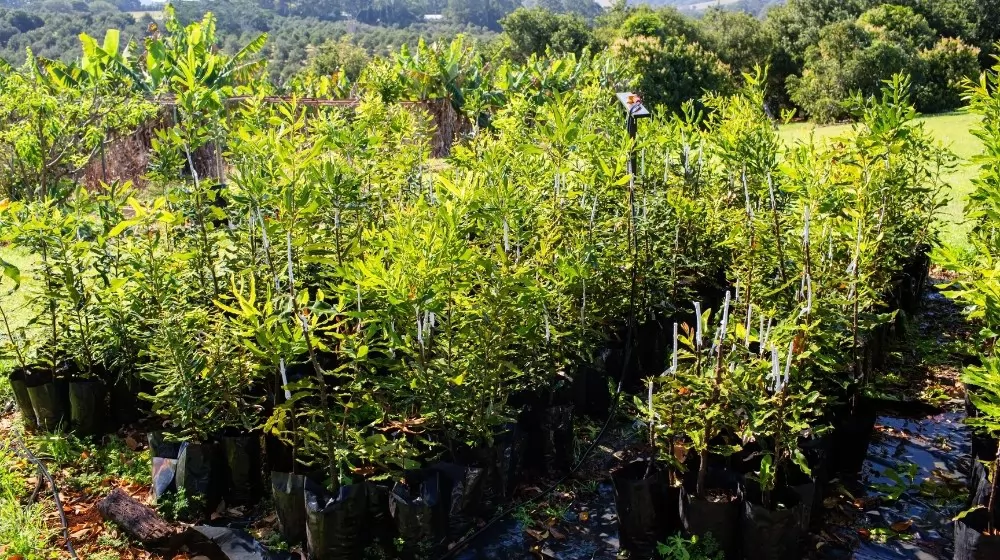
While plastic pots have been a staple in gardening for many years due to their many advantages, it's equally crucial to recognize their shortcomings. Understanding these drawbacks allows gardeners to make the best decision for their specific needs. Here's a look at some of the challenges posed by plastic pots.
One of the primary concerns surrounding plastic pots is their environmental impact. Being non-biodegradable, they can contribute to landfill waste if not recycled properly. Additionally, the production of plastic materials often involves non-renewable resources, adding to environmental concerns.
Plastic pots can sometimes retain too much heat, especially when placed in direct sunlight. This can lead to overheating of the soil, potentially harming plant roots and affecting overall growth.
Unlike the breathable fabric of grow bags, plastic pots retain water for longer periods. While this can be an advantage in some scenarios, it can also pose a risk of overwatering if not carefully managed, leading to root rot and other related issues.
Unlike grow bags, which promote air pruning, plastic pots don't offer this benefit. As a result, plants might experience root circling, potentially hindering their growth and overall health.
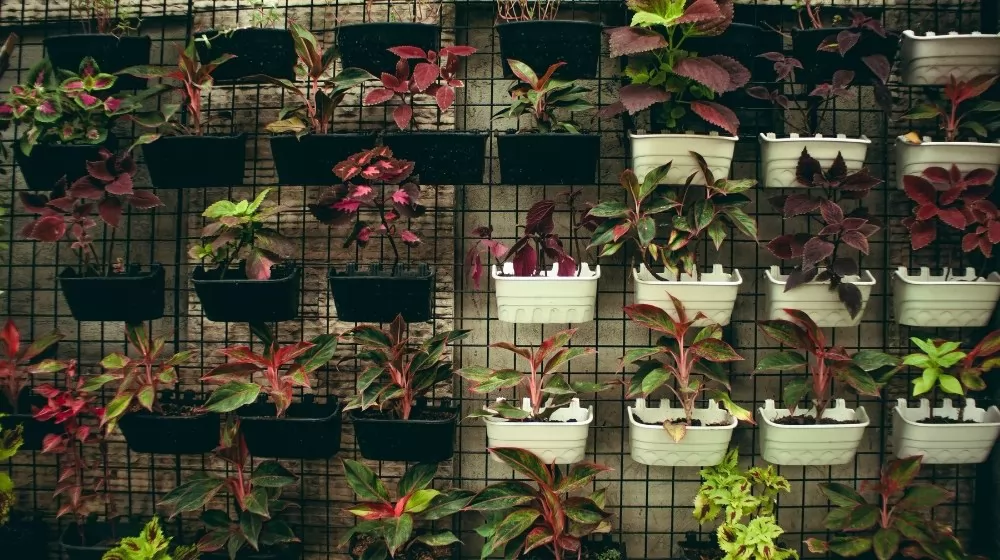
Every plant species has its unique requirements for optimal growth. When deliberating between Grow Bags vs. Plastic Pots, it's crucial to keep in mind the specific needs of the plants you intend to cultivate. Let's explore these considerations for various plants.
For plants susceptible to becoming root-bound, grow bags can be a lifesaver. The air pruning effect ensures the roots grow healthier, preventing them from circling within the container. Examples include tomatoes and peppers. In contrast, plastic pots might not be ideal for these plants without regular repotting.
For drought-tolerant plants that prefer drier soil, grow bags can be beneficial due to their breathability and faster evaporation. Succulents, cacti, and certain herbs fall into this category. Plastic pots might retain more moisture, posing a risk of overwatering.
For plants sensitive to temperature fluctuations, plastic pots may offer a more stable environment, especially in colder regions. The insulation provided by plastic can be beneficial for tropical plants or those that need consistent warmth.
For gardeners aiming for an aesthetically pleasing display, the visual appeal of the container might be a priority. In such cases, decorative plastic pots, available in various designs and colors, could be the preferred choice over the more utilitarian look of grow bags.
As the world becomes more conscious of environmental sustainability, it's essential for gardeners to consider the environmental implications of their choices. Both Grow Bags and Plastic Pots come with distinct environmental footprints. Let's dive into an analysis of their impacts.
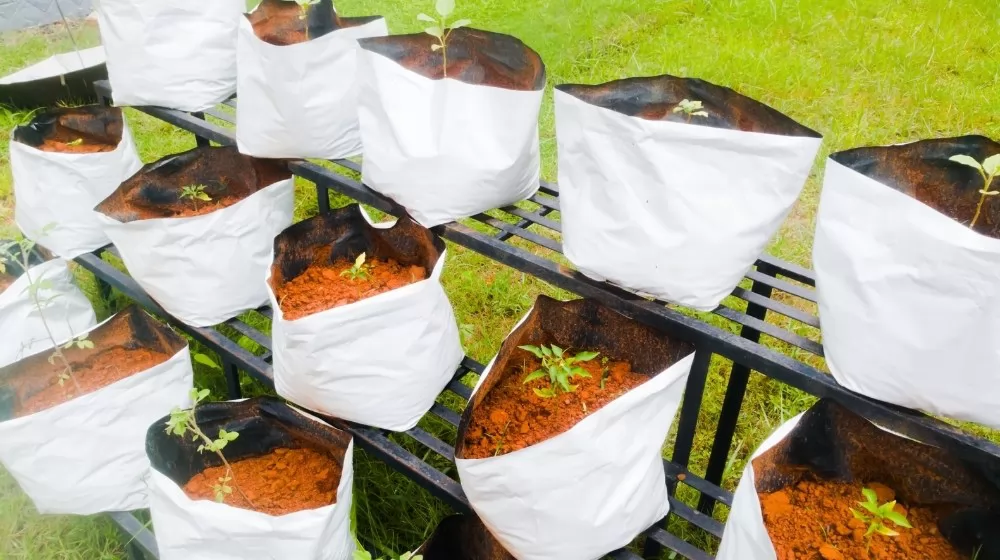
Choosing the right size for a grow bag is crucial to ensure your plants have ample space to flourish. Here's a guide to help you navigate the options and make an informed choice.
Begin by researching the anticipated mature size of your plant. Different plants have varied root systems – some grow deep, while others spread out. Understanding the root behavior and the final size of the plant can help you decide on the volume of the grow bag.
For plants with a longer growth cycle or perennials that you intend to keep in the same container for years, opt for a slightly larger size than initially required. This allows the plant to grow comfortably without becoming root-bound too quickly.
Lastly, consider the space you have available. While it's essential to provide your plant with room to grow, it's also crucial to ensure that the grow bag fits within your gardening space, whether it's a balcony, patio, or garden plot.
Deciding between grow bags and plastic pots is more than just a matter of preference; it's about understanding what's best for your plants and the environment. As you ponder over your choices, remember that choosing quality is essential. For top-notch gardening tools and grow bags, look no further than Linkwin, China's leading garden tool and grow bags manufacturer and trader. With quality products and expertise, Linkwin is your trusted partner in cultivating a thriving garden.






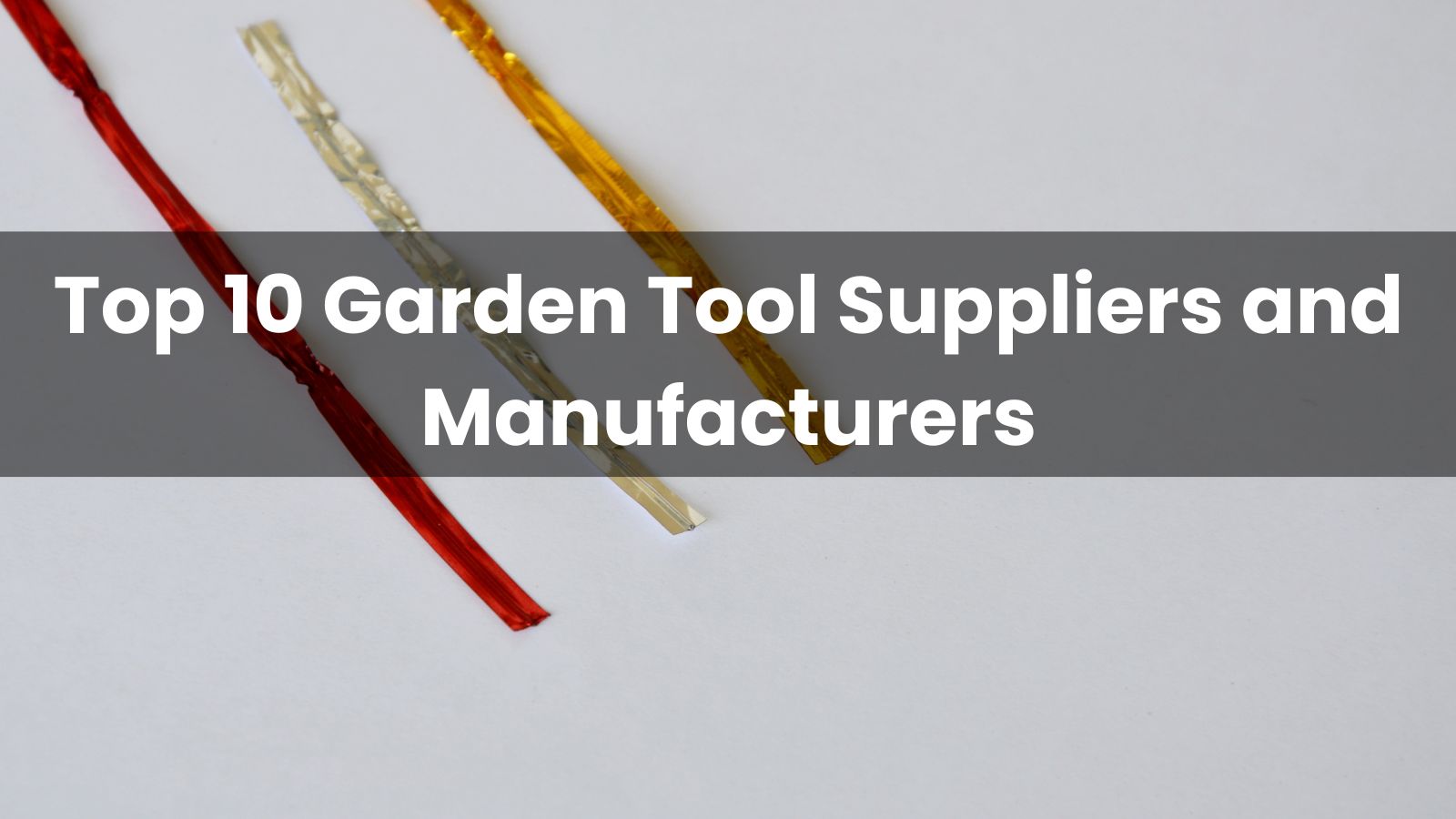

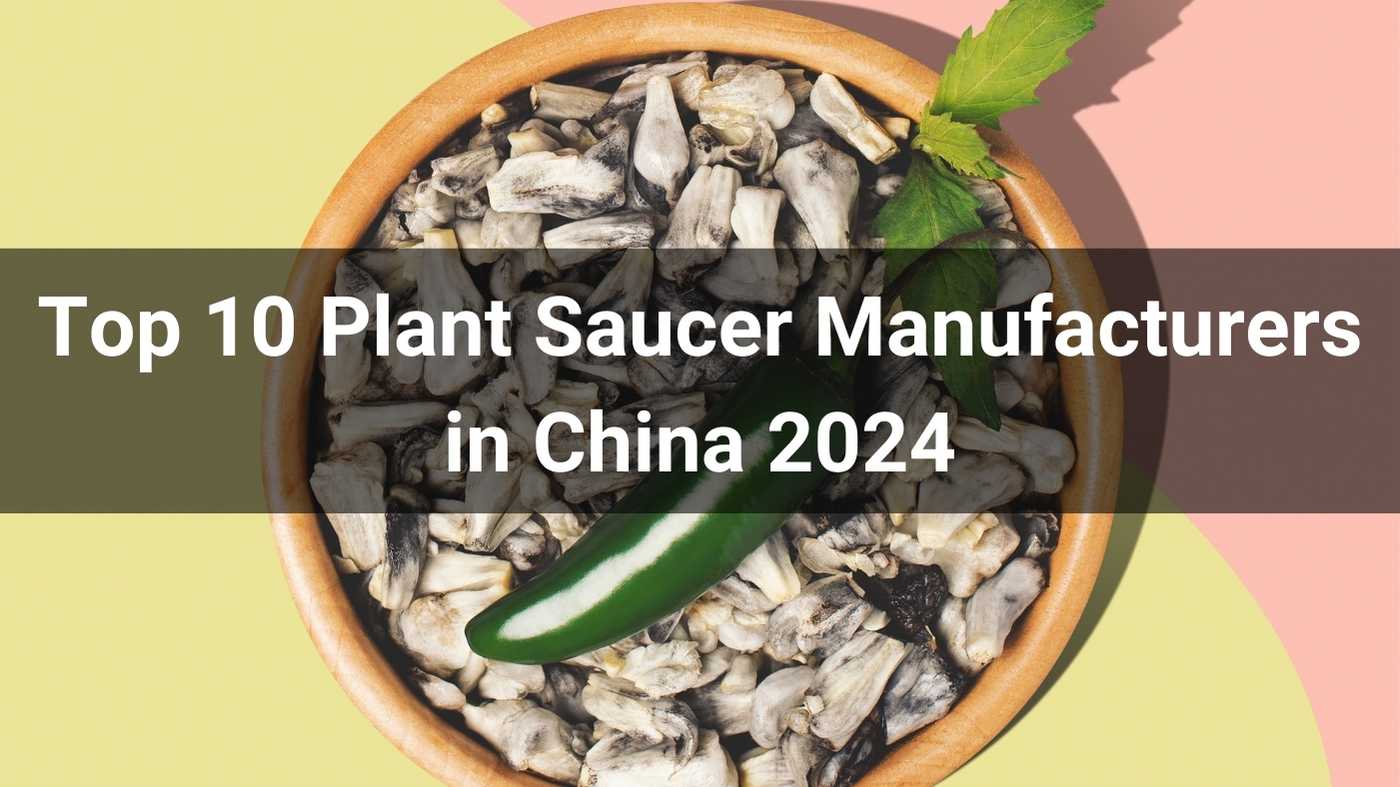


We use cookies to make the website work, to provide advanced features, social media and traffic analysis, and we use analytics and third-party advertising cookies. If you choose to click "Deny All", you will retain the default setting of not allowing the use of cookies or other tracking tools other than technical tools.

